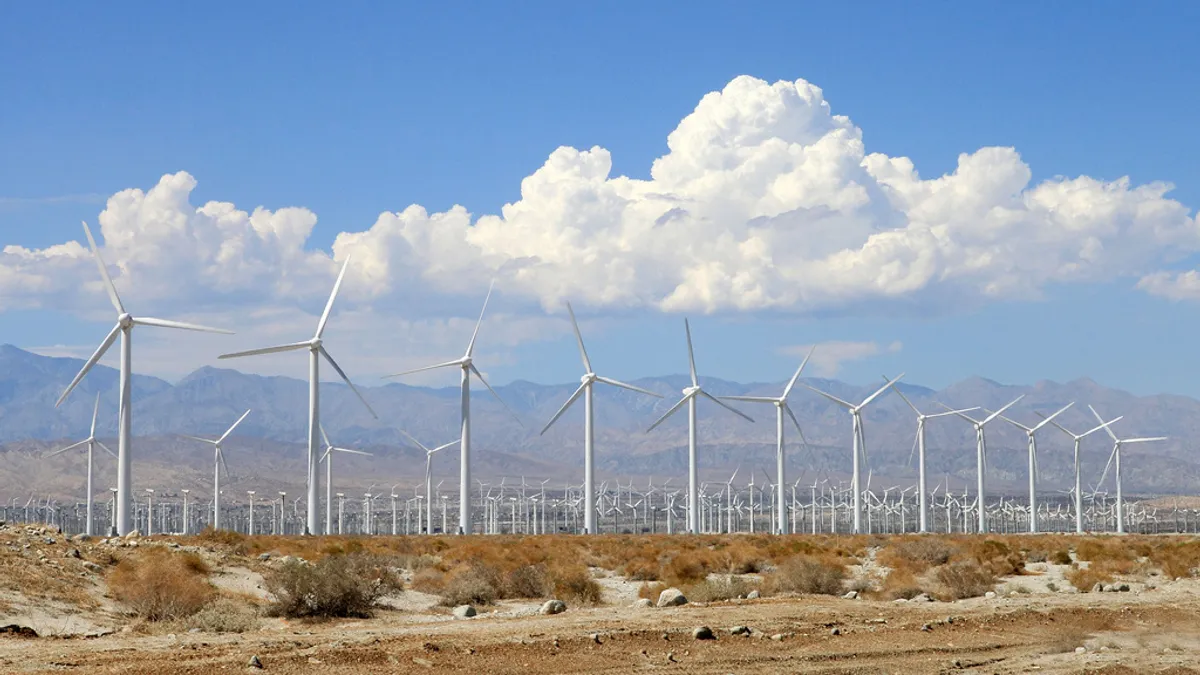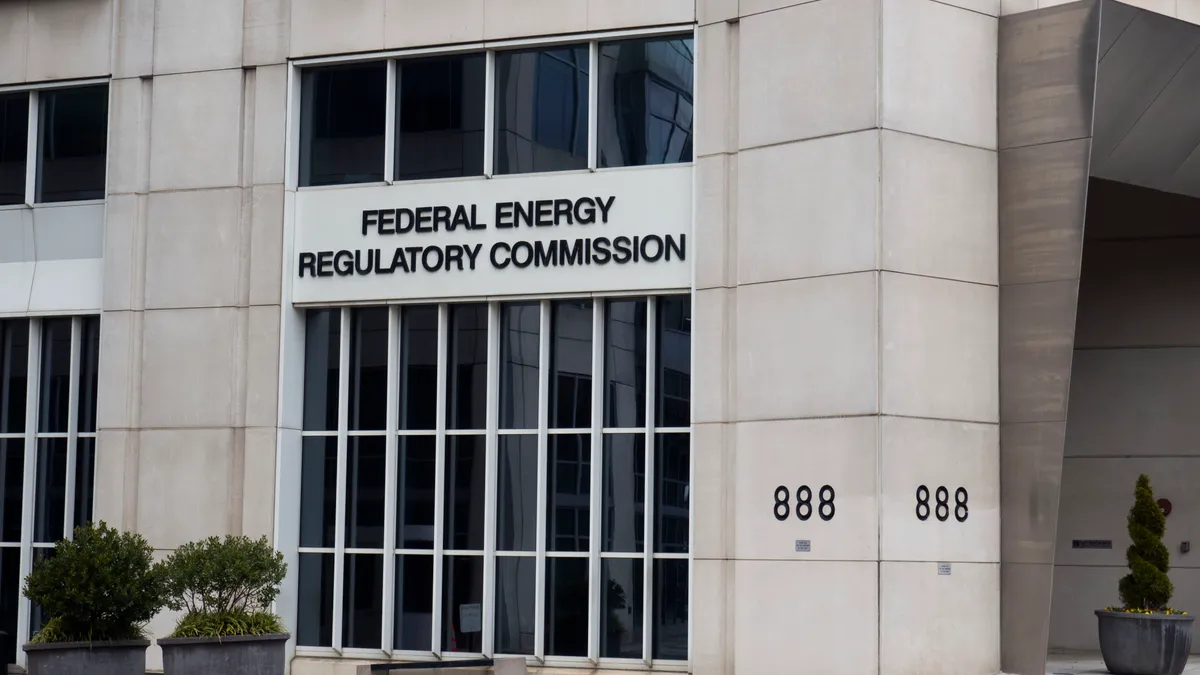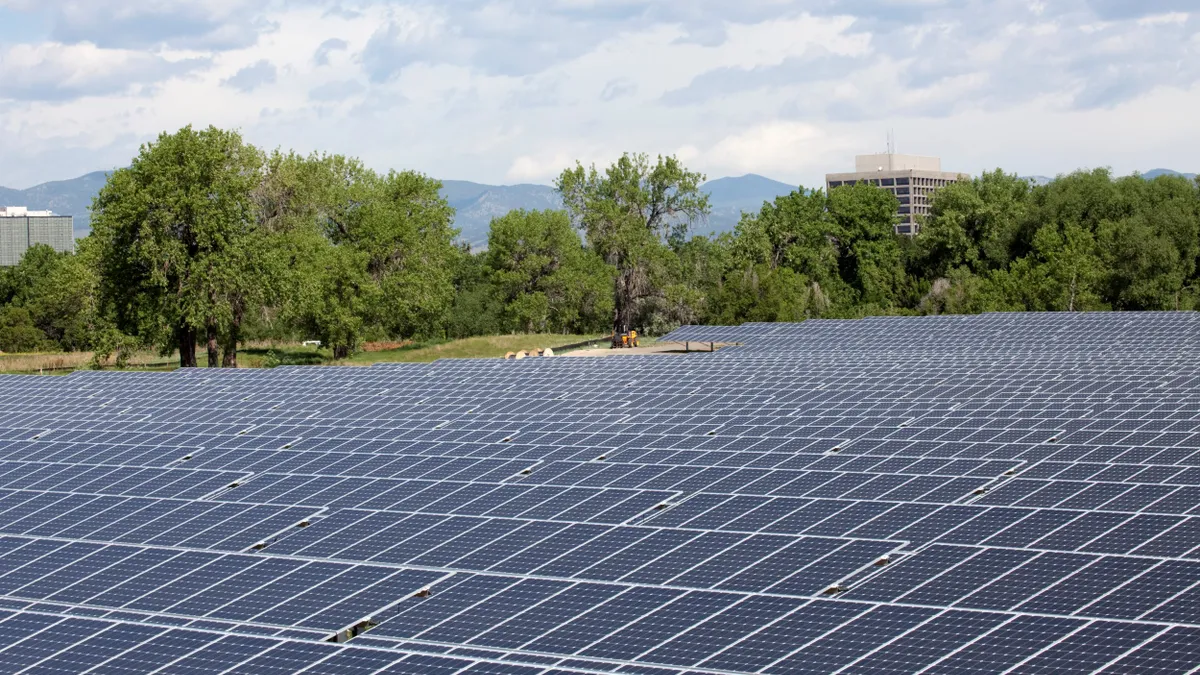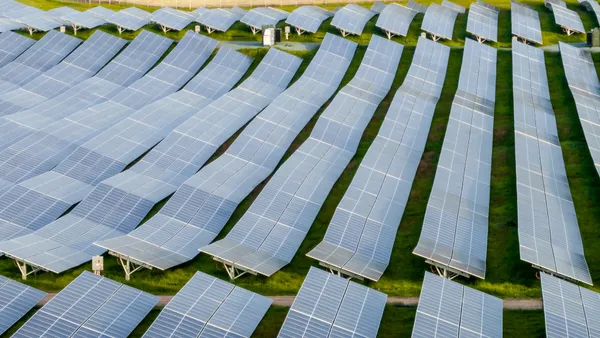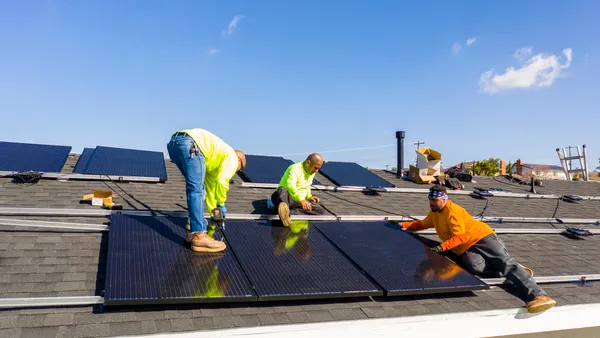Dive Brief:
- Renewable Energy World has broken down data from the U.S. Energy Information Administration to show that carbon-free energy sources like wind, solar, and geothermal energy are creeping up in many state's energy mixes, and largely have become "mainstream."
- According to the site, this year 23 states have one of those fuels in their top-3 generation sources, and estimates that number could be haf of the United Sates by 2020.
- More than 30 states used coal for their primary generation source around 2000, but last year that number was down to about 20, REW points out. This year, the U.S. Energy Information Administration expects natural gas to edge out coal as the nation's primary source for the first time.
Dive Insight:
The rise of carbon-free power and the decline of coal are not news anymore, but Renewable Energy World found a new way to quantify the shift—by looking at the leading sources of a state's generation, and comparing the shift between 1999 and last year.
According to the site's analysis, natural gas grew from being the No. 1 resource for only six states in 1999, to being the top resource for 16 states. Conversely, coal dropped from No.1 spot in 32 states in 2000 to being the top resource in only 20 states by 2015.
That shift has been driven by falling natural gas prices, expanding carbon-free options and stricter environmental regulations.
According to the U.S. Energy Information Administration's most recent Short Term Energy Outlook, the price of natural gas delivered to generators averaged $2.23/MMBtu in March of this year, the lowest in nominal terms since 1999. In 2016, the agency expects gas to supply 34.5% of electricity generation, up from 32.7% last year. Coal is forecast to supply 30.1% of electricity generation this year, compared with 33.2% in 2015.
EIA also expects renewables consumption to increase by 10.5% in 2016 and by 4.3% in 2017. Hydropower is expected to increase by 7.8% in 2016 and then fall by 2% in 2017. EIA predicts consumption of renewable energy other than hydropower in the electric power sector is forecast to grow by 12.9% in 2016 and by 9.6% in 2017.
Utility-scale solar capacity will grow by 8 GW this year, EIA predicts, and by 5.3 GW in 2017. U.S. wind capacity totaled 72.5 GW at the end of 2015, more than five times the amount of solar capacity. Wind capacity is expected to increase by 7.5 GW in 2016 and by 8.5 GW 2017.



